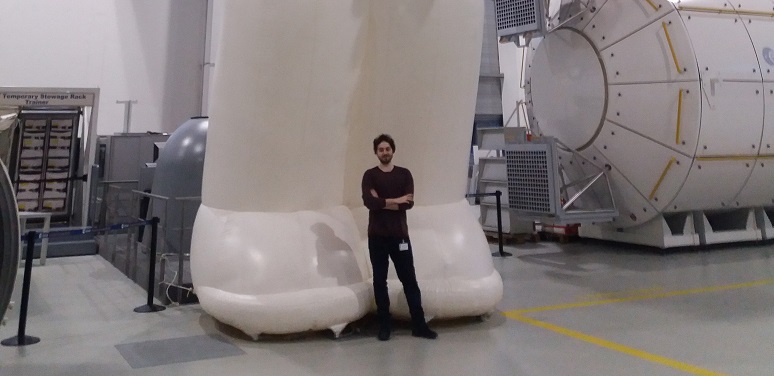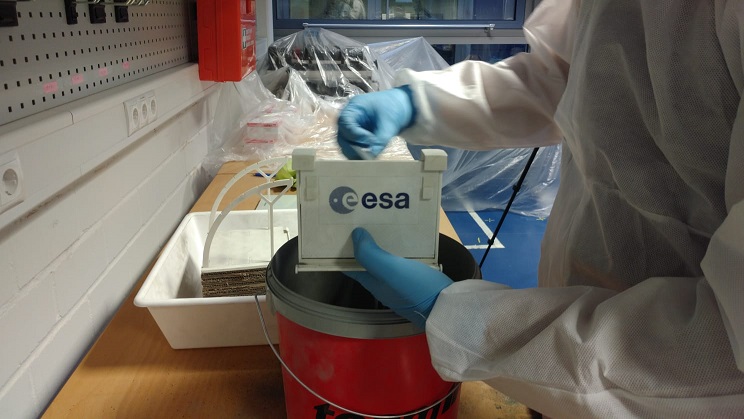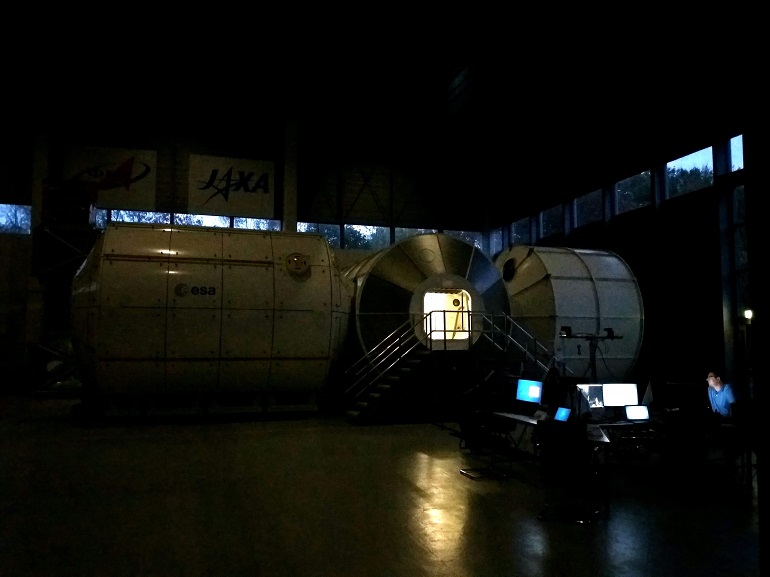Determined to become a fixed star rather than a passing comet in his domain, young Greek architect engineer Angelos Chrysovalantis Alfatzis has made a significant contribution to the study of materials for building habitable constructions in space, while working as part of a European research team.
Currently completing his compulsory military service in the Greek Army, the graduate in both Applied Arts and Architectural Engineering at the National Technical University of Athens saw his wildest dreams launch into orbit when he applied for a trainee position at the European Space Agency in 2019.
“I decided to apply even though they weren’t seeking an architect. Eventually, my application was picked up by a multidisciplinary research group at the European Astronaut Centre in Cologne, Germany, called Spaceship EAC, where young researchers from different fields, ranging from biologists to aerospace engineers, work towards the group’s motto, “Paving the Way to the Moon”, Alfatzis tells Greek Reporter in an exclusive interview.
Thrilled to be joining the select team in investigating lunar-related concepts as Europe prepares for future missions under the Spaceship EAC initiative, Alfatzis admits having felt impressed since day one by the normalcy of working alongside astronauts and contributing to space-related research.
“We now know that the Moon will be the testing area of the future of space exploration and habitation,” the engineer explains.
“If we combine this with the fact that it is imperative to use the respective local resources of each astronomical body that we visit, it becomes clear that we should focus our research on on-site methods of materiality and building, rather than constructions made and dispatched from Earth.
“This study simply proposes the utilization of the Moon’s most prominent features, its craters and its soil,” he says.
“At first a more abstract architectural research project, my aim was to study practical ways to utilize the unprocessed lunar regolith, the Moon’s surface material, as the main component of a lunar construction, one that follows our current technological level and could be built in our immediate future.
“On my suggestion, the Spaceship EAC group, led by Dr. Aidan Cowley, entered a lunar architecture competition held by the Moon Village Association, where the project was worked upon by scientists and researchers from a variety of backgrounds, and acquired a more concrete shape as a result,” he relates.
The project succeeded as one of the winning entries to the competition, winning many advocates in the process.
“Our idea may sound simple, but it is actually ingenious,” Alfatzis continues with pride. “We imagined a structure with inflatable modules and rigid life support systems as the main habitat. The atmospheric pressure inside is more than enough to hold a few meters of regolith that will be piled on top of them. Its protective qualities make the lunar soil an ideal radiation-proof solution,” he explains.
“We also want to use the landscape’s morphology to our advantage, since it is very difficult to excavate material on the Moon. A small crater will act as a ready-made excavation, where our modules will be “buried” and thus completely protected from space weathering phenomena,” he adds.
Alfatzis’s personal research continued well after his term at the EAC ended, and the project evolved into a study which he came to present at his alma mater, the National Technical University of Athens, as well as at the Tokyo University of Science in Japan.
While his lunar constructions are often mistaken by the general public as “houses on the Moon”, he clarifies that this would be misleading, despite their habitation-oriented use. “By calling them houses or residences, we imply an indefinite stay in a place where one could actually live; this is not the case with the Moon.
“A lunar habitat will function as a base of operations where astronauts are not required to stay continuously for months at a time, since the effects that the Moon’s weaker gravity has on the human body are not properly documented,” he says.
Although at the moment unaware of what the future might bring next on his professional journey, Alfatzis is certain about one thing; he would definitely like to see himself involved in an actual realization of a lunar habitation project one day.
“Similar to the International Space Station, we imagine the early stages of lunar habitation to be a collaborative project between the world’s space agencies. If we are to build a permanent lunar base by the next decade or so, instead of coming up with extravagant solutions and conducting research on dwelling scenarios that only relate to the far future, we should turn to pragmatic building methods.
“And since every aspect of such a feature is subject to change, we must focus on creating a new architectural typology and its respective construction process, rather than focusing on details, such as the number of astronauts housed,” he states.
Alfatzis’ suggestion is that we ought not to think of the lunar conditions as just a series of obstacles that we will have to overcome with our wit and technological knowhow.
“The Moon is an extreme environment like no other, a truly exotic place for the human organism. From the constant micrometeoroid bombardment and radiation exposure, to the weak gravity and extreme temperature fluctuations, the conditions there are indeed life-repellant. What we urgently need, though, is a paradigm shift, to move on from any structural and architectural bias we may have,” Alfatzis insists.
“By being completely detached from our conditioned building practices here on Earth, we are approaching the subject of lunar habitation by reinterpreting architecture anew. And herein lies the value of this study: giving insight to architects, especially new ones, about the foundation of their practice; approaching each problem top-down, to find each special solution. This was my biggest lesson”, he concludes.
See all the latest news from Greece and the world at Greekreporter.com. Contact our newsroom to report an update or send your story, photos and videos. Follow GR on Google News and subscribe here to our daily email!








